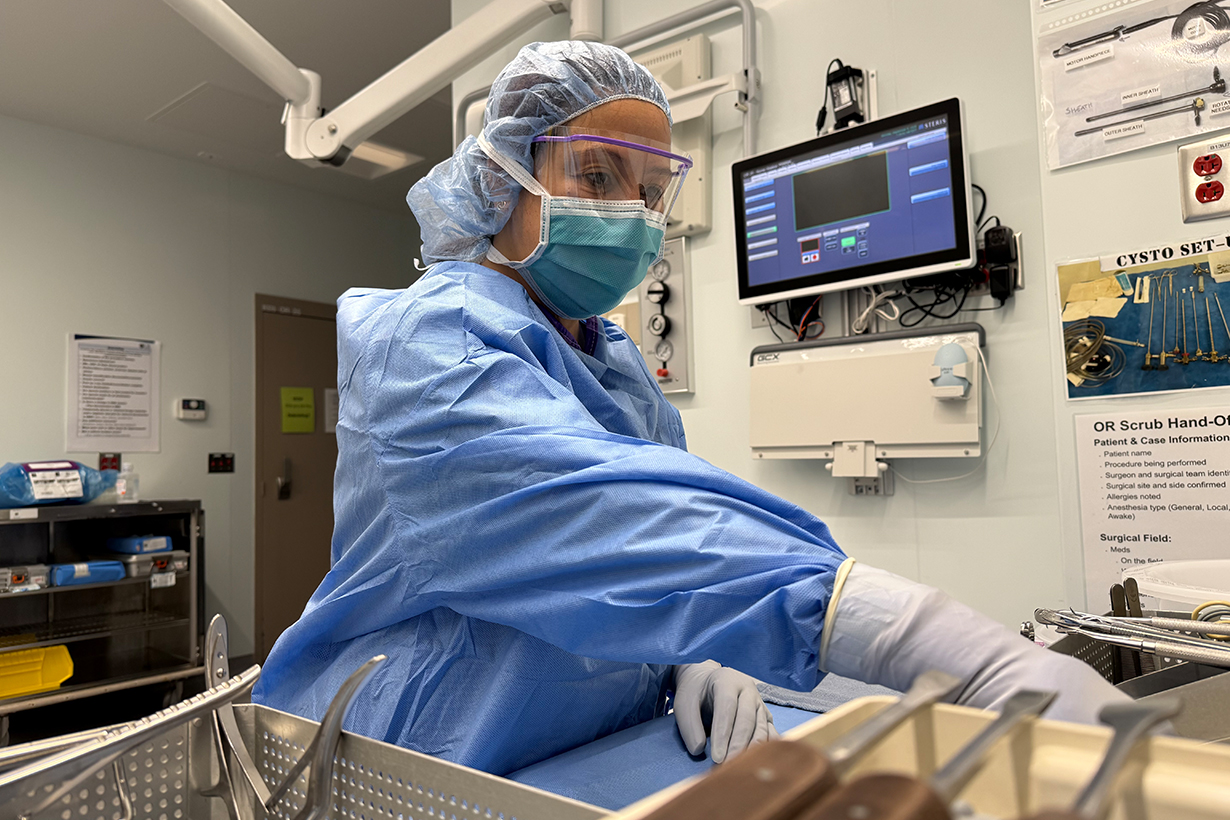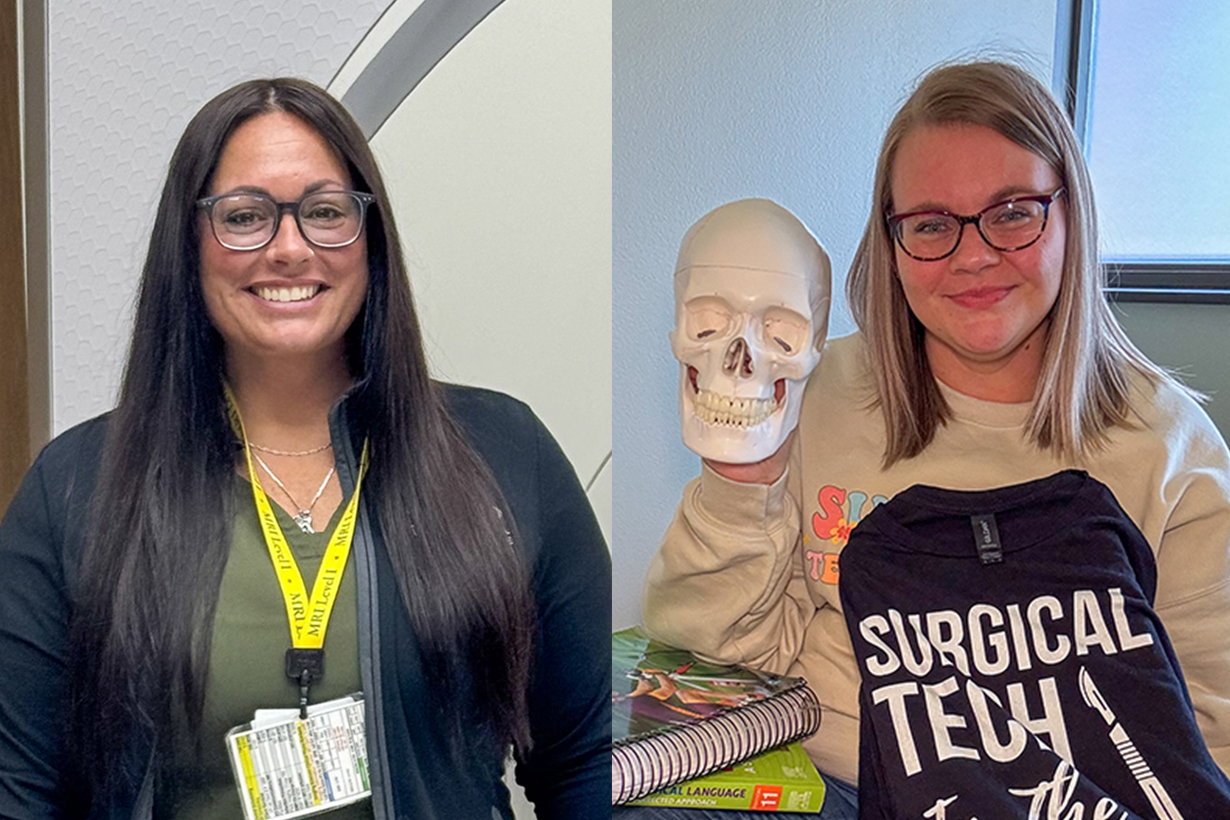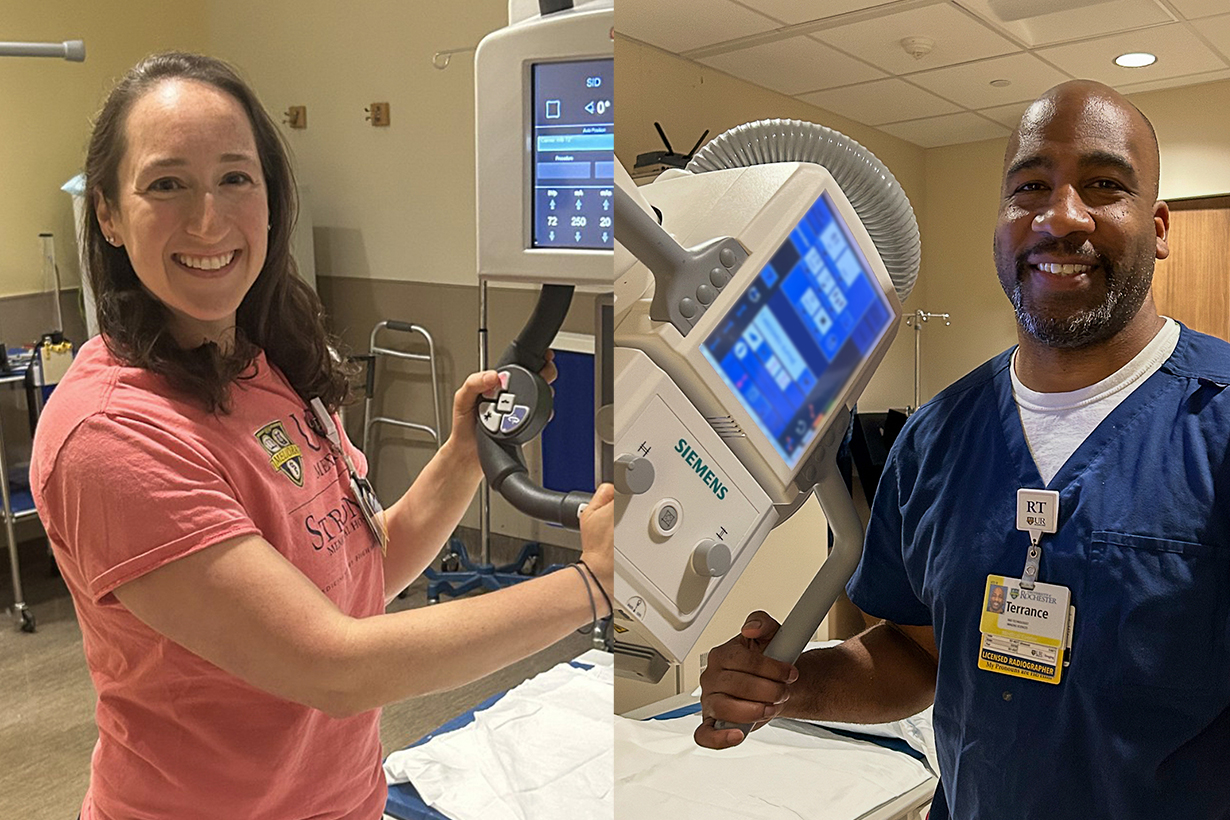The University of Rochester celebrates our incredible employees who make us a better place to work, grow, and serve. In this series, get to know some of the many individuals who turn our mission into action each day—one story at a time.
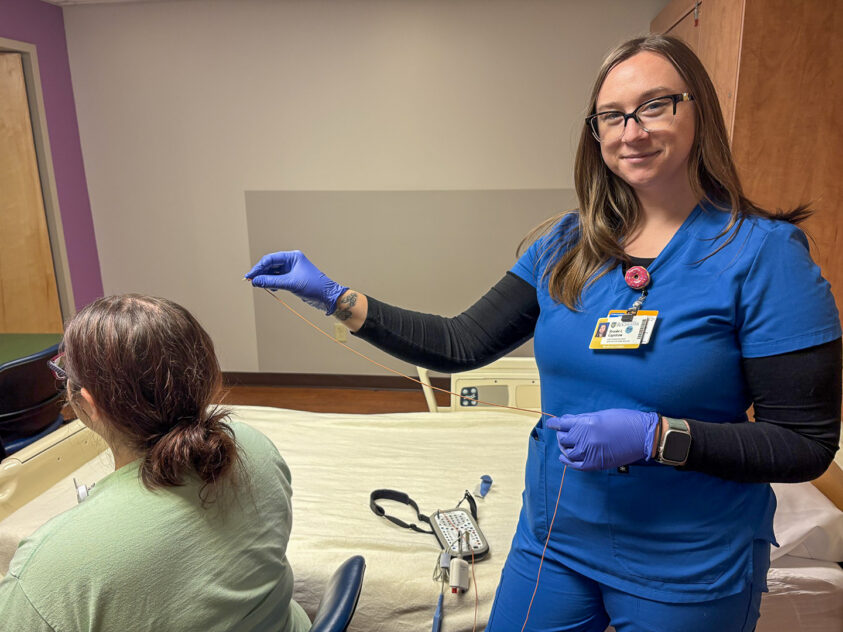
Healing through the quiet hours—Meet a member of our sleep technician team
Brooke Capstraw
GCH Pediatric Sleep Medicine Services
Sleep Technologist (RPSGT)
What does a typical night shift entail for you as a sleep technician (tech)?
A typical night shift at the sleep lab starts with preparing for the patient by reviewing their chart. Once the patient arrives, we go over the intake questionnaire, which includes the patient’s medical history, and, of course, questions regarding their sleep, bedtime, and routine.
From there, I explain the sleep study procedure and how all of the wires and equipment are used. There are lots of wires and “stickers”. (EEG electrodes that are placed on the head and face, EKG patches, stretch Velcro respiratory belts that go around the patient’s stomach and chest, a nasal cannula, a snore microphone electrode, a pulse oximeter, and a couple of patches on the legs.)
After giving them time to complete their usual nightly routines, I grab my cart with all of the necessary supplies and bundles of wire to begin the equipment “hookup”. The patient sits in a chair so I can place the wires on them. Sometimes a parent helps with this process by encouraging the patient to keep the equipment on and making them comfortable. Once everything is secured, the patient gets into bed and the study begins.
The sleep study is initiated on a sleep software, and as a sleep tech, I can view various information collected, such as the patient’s blood oxygen saturation, brain waves, eye movements, snoring, teeth grinding, breathing patterns/respiratory rate, leg movements, heart rate, and more. All of these different elements help the providers get a good understanding of the patient’s sleep architecture, quality of sleep, possible obstructive respiratory events, and other aspects. When the study ends at 6 am, the patient is woken up, I remove the equipment, and before they leave, either the patient or, depending on the patient’s age, the parent/guardian will fill out a morning sleep questionnaire. The last steps of the shift are cleaning the wires and rooms, and completing paperwork.
How do you help patients feel at ease during sleep studies?
I tell them that they are here for a sleepover where they will get to wear stickers and have some fun “rainbow hair” (the electrode wires are different colors), or maybe even look a little like a robot. Sometimes we have kids who have trouble with sensory processing, and in these cases, I usually give them an electrode patch/sticker to try putting on themselves first wherever they want (arm, leg) or have the parent/guardian put one on themselves, so they can see how it feels.
What’s one part of your job that most people wouldn’t realize?
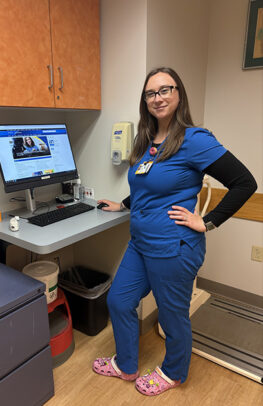
I think sleep techs have the worst sleeping patterns. We stay up at night to ensure our patients’ best sleep, so we can help get to the bottom of their concerns. The sacrifice is well worth it when you can make a difference in someone’s health and wellbeing!
How do you think better sleep improves lives?
When someone has poor sleep, it can negatively affect many aspects of their lives, including mood and behavior, physical health, relationships, work, school, etc. If we can discover its cause or an underlying health condition, we can find ways to treat them.
What motivates or inspires you during the quiet overnight hours?
Quality patient care keeps me motivated. There are moments where sleepiness can start to hit, but ensuring the patient feels safe and comfortable, while also maintaining the equipment, is imperative to getting answers.
What skills or traits are important to thrive in this role?
Patience, understanding, and compassion are necessary to work in any role in healthcare, but I think especially with children. They are coming in for a procedure that may feel strange, doesn’t make sense as to why they need it, and may seem scary to sleep in a different place rather than home with a lot of electrodes placed on them.
What advice would you give to someone who is thinking about becoming a sleep tech?
Don’t be afraid to ask questions and keep learning! As sleep techs, we all have slightly different approaches when it comes to our workflow. Take things you learn from other sleep techs to create what works best for you and the patient.
How has the University supported your journey as a sleep tech, or how would you describe the support provided by leadership and your coworkers at URMC?
I knew right away I wanted to work at URMC after doing several months of a clinical rotation while enrolled in Genesee Community College’s Polysomnography program. The amazing people working here, along with the reward of working with kids, made me realize this was my place.
I have loved growing as a team with my co-workers over the last eight years. After two years of being on the night shift, I was able to take a position that had opened up on days where I now score the sleep studies with a small group of scoring techs. This has helped me grow in my career by continuing to learn different facets within the field of sleep.
The support our team of sleep techs shows for one another has always made me feel like a part of a family.
Join our team! Explore boundless career and growth opportunities at the University of Rochester. Apply to be a sleep technician.
Did you know? Sleep technician is just one of the exciting roles open to current employees through our Career Pathways Program. Discover the benefits, eligibility details, and opportunities available to support your professional development.

